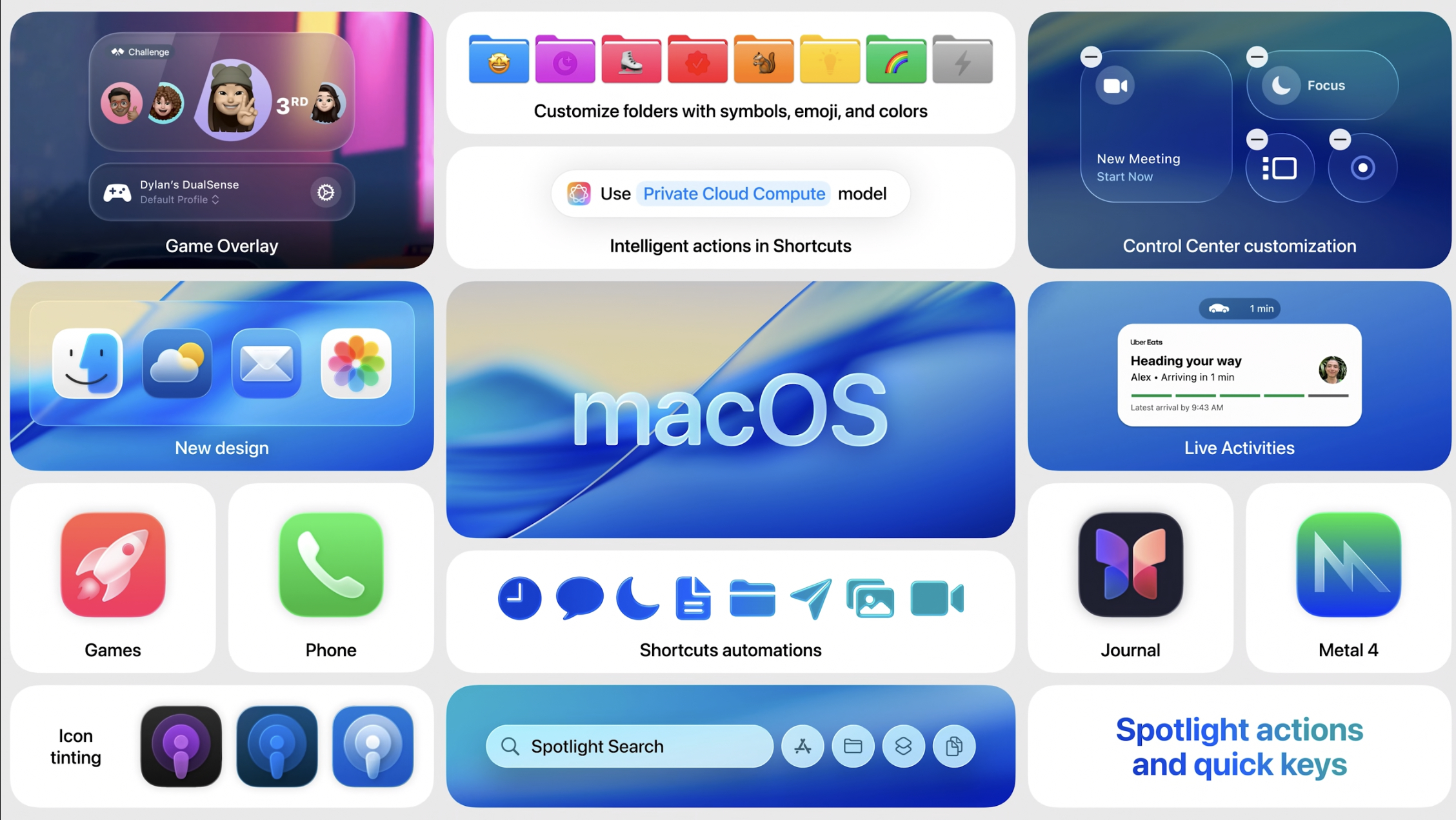Apple revealed its plans for the next version of macOS at the WWDC keynote on Monday June 9, 2025. The company also showed off new features for the next iOS, iPadOS, watchOS and more at the event.
Like its counterparts on the other Apple devices, macOS is getting a brand new look for 2025-2026 along with a new name. Because Apple is aligning the names of all the operating systems this year, the new version of macOS be called macOS 26 rather than macOS 16. It will also take the name Tahoe, inspired by the lake, beaches and the ski resorts of that area of California.
Along with the redesign, macOS 26 gains new Continuity featuers, a brand new Phone app and new Live Activities. Spotlight also gets its biggest ever update with the ability to action things like sending emails and more from within Spotlight.
These new features will be available later this year, but if you would like to try them out now you can. The developer beta is out now and the public beta will follow in July. We have more information about joining the beta and the release date of the public beta below.
You will find all the things you need to know about macOS Tahoe below, including which Macs are compatible with macOS 26 and the new features you can expect. So, stay tuned to this superguide for everything you need to know about macOS 26 Tahoe, the latest version of the beta and all the new features that are coming.
macOS 26 Tahoe release date
- Date TBC: 15 September, 2025 predicted
Apple’s official release of macOS 26 Tahoe will be in the fall, as is usually the case. We don’t know the release date for sure, but we can estimate that it will coincide with the release of the new iOS update, which will probably happen a few days after the iPhone event in September 2025. We anticipate the September iPhone event and the launch of the launch of the iPhone 17 will take place on September 9, so the software could be out around September 15 or 16.
However, Apple has previously scheduled the update to macOS after iOS, sometimes as short as a week, sometimes as long as a month, so there could be a longer wait with an October release possible.
Here is the recent shipping history for macOS.
- macOS 15 Sequoia: September 16, 2024
- macOS 14 Sonoma: September 26, 2023
- macOS 13 Ventura: October 24, 2022
- macOS 12 Monterey: October 25, 2021
- macOS 11 Big Sur: November 12, 2020
- macOS 10.15 Catalina: October 7, 2019
- macOS 10.14 Mojave: September 24, 2018
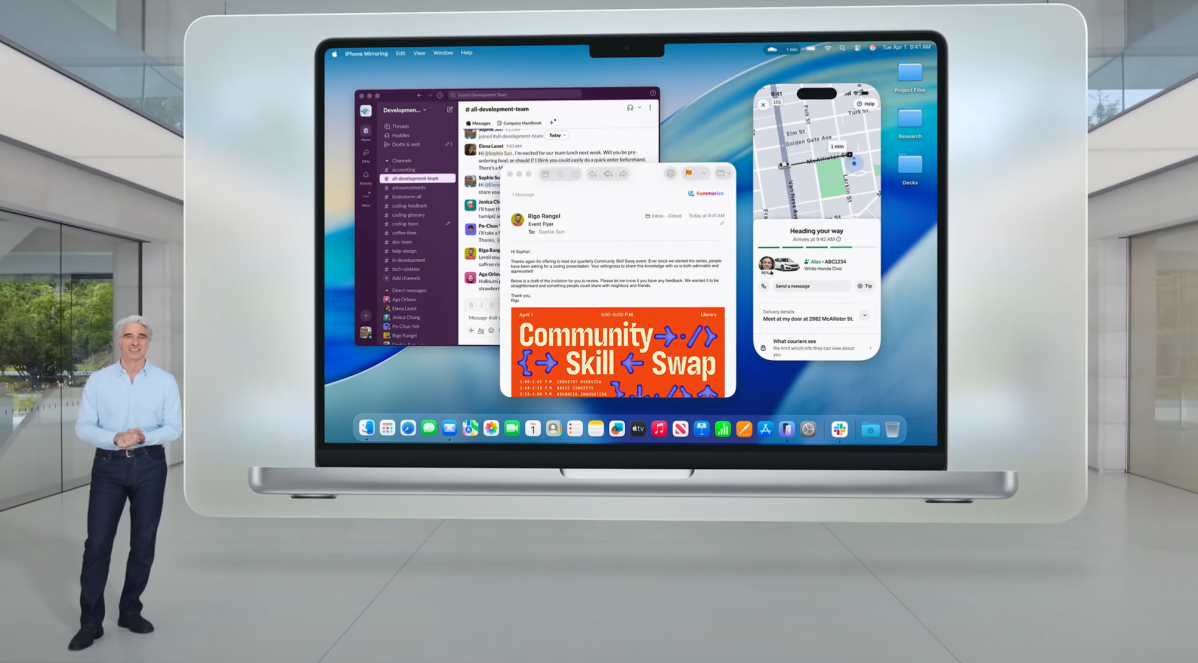
YouTube / Apple
macOS 26 Tahoe Beta release date
- Developer beta: June 9
- Public beta: July 15 (estimate)
However, you won’t have to wait until the full release to try the new software out. Apple runs a developer beta as well as a public beta, so if you want to try out the new features before they are released to the general public you will be able to do so. Both betas are free, though the developer beta requires a free registration as a developer.
The developer beta is released first following the WWDC keynote, so developers can immediately begin testing it with their products. Apple then releases a public beta for everyone else who wants to try it. The Public Beta usually arrives in July, about a month after the first developer beta. Then, whenever Apple issues beta updates, the updated public beta follows a day or two after the updated developer beta.
If you are interested in using the beta, you can join Apple’s beta program. The beta program involves running software that will have some stability issues, and you are expected to provide Apple with details of any issues through the Apple Feedback app. Just be aware that beta software is likely to be unstable and may even cause your Mac to become unusable.
For help installing the macOS beta see our guide to installing the macOS beta.
macOS 26 Tahoe supported devices: Which Macs get macOS Tahoe
- Requires Apple Silicon or Intel-based Mac computers with a T2 Security Chip
- Apple Intelligence features require M1 or later
When Apple updates the operating system for its devices it sometimes means that certain models are no longer supported. The good news is that Macs that ran macOS Sonoma will be able to run the new macOS. Apple states that the requirement is: Macs with Apple silicon and Intel-based Mac computers with a T2 Security Chip.
Here are Macs with Apple Silicon that will be able to run macOS Tahoe:
- MacBook Air (M1/2020 and later)
- MacBook Pro (M1/2020 and later)
- iMac (M1/2021 and later)
- Mac mini (M1/2020 and later)
- Mac Studio (M1/2022 and later)
- Mac Pro (M2/2023 and later)
Here are the four Intel-powered Macs able to run macOS Tahoe. These models won’t support Apple Intelligence features:
- MacBook Pro (16‑inch, Intel/2019)
- MacBook Pro (13‑inch, Intel/2020, Four Thunderbolt 3 ports)
- iMac (Intel/mid 2020)
- Mac Pro (Intel/2019)
Apple has confirmed that this is the last version of macOS for Intel Macs.
macOS 26 Tahoe design: Liquid Glass and other interface changes
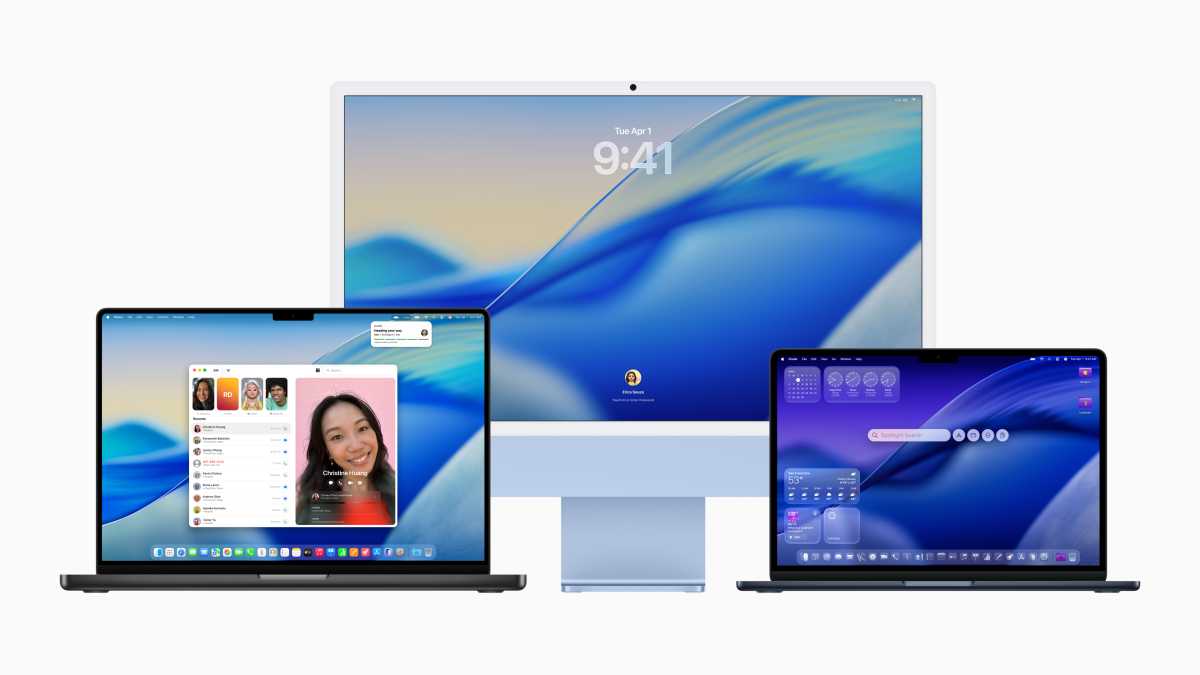
Apple
Apple showed off some enticing new features for macOS that will be coming later in 2025. A number of new features and interface enhancements were promised, but one of the biggest changes is coming to all of Apple’s products: a new design based on a graphical user interface that Apple is calling Liquid Glass.
Apple showed off the brand new look for macOS in the WWDC keynote. As with Apple’s other operating systems, macOS Tahoe uses Apple’s new Liquid Glass effect to create reflective, glossy elements around the interface. The Liquid Glass elements will change color to reflect the content beneath as you scroll and will dynamically react. Buttons appear more curved and less flat.
You’ll see the effect in the Dock, sidebars, toolbars and elsewhere. The menu bar is fully transparent, for example.
This is the first time in years that Apple has made significant changes to the visual style of macOS and it certainly makes the OS appear more modern.
Interface changes
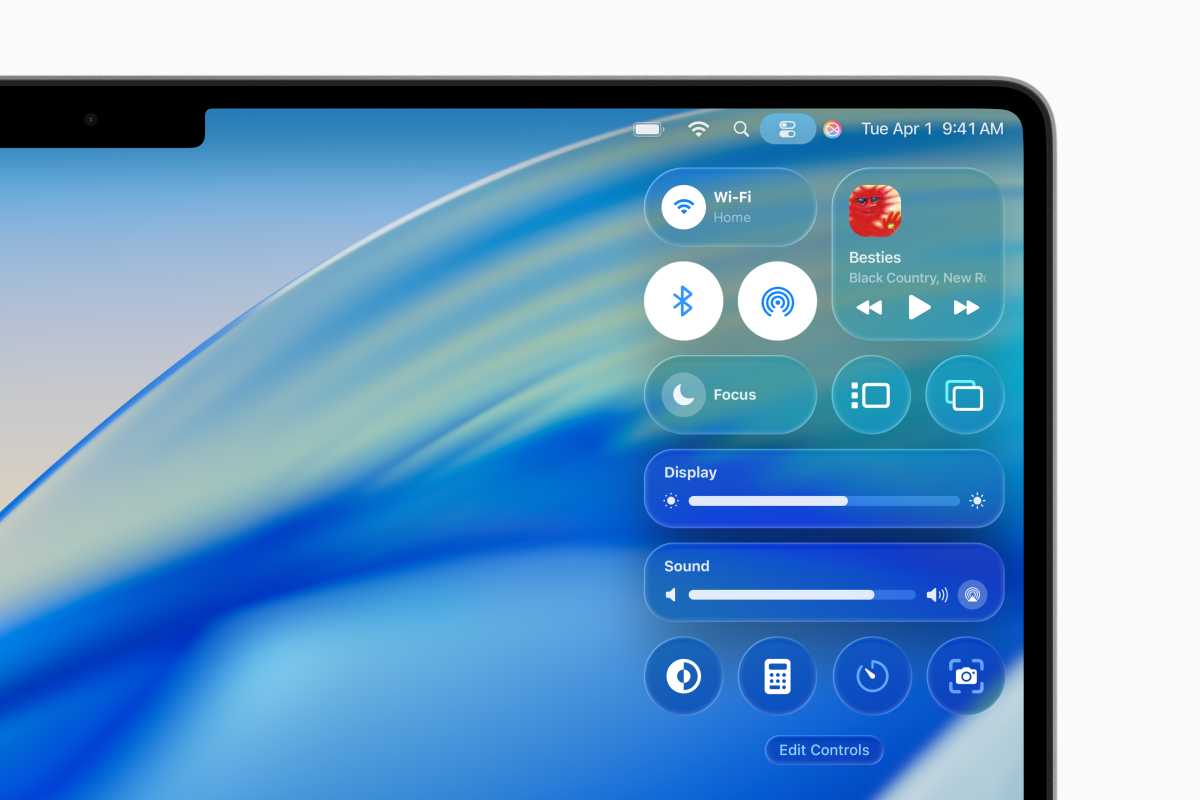
Apple
Apple says the design overhaul will elevate the key elements of macOS and enhance the macOS experience. The cleaner design is intended to help the user to focus on their content rather than other distractions, while elements like the translucent menu bar will make the screen feel larger.
Users will be able to control what appears in the menu bar and Control Centre thanks to a customizable layout, similar to iOS 18. Users will also be able to add controls for their favorite apps to the Control Centre.
macOS will gain a feture that arrived on the iPhone and iPad with iOS 18: tinted and dark app icons.
Users will be able to personalize their Mac in other ways too, such as changing the color of folders and adding emoji or symbols to help them identify folders. Users can also pick personalised wallpapers and choose theme colors.
Spotlight overhaul

Apple
Spotlight has always been much more than a search tool built into macOS, helping users find anything on their Macs, make calculations and conversions, and more. In macOS Tahoe, Spotlight will be able to do even more.
Spotlight’s design and functionality has been completely rethought for macOS 26, with changes that will help Mac users get things done faster.
Rather than being a single bar, on the right-hand side of the new Spotlight search box you will find icons for things like apps, files, Shortcuts, Actions, and clipboard. Select one of these buttons and Spotlight’s box expands to house relevant items in an easy-to-browse view. When you search for something, you’ll see relevant filters under your search terms – click one to quickly apply it.
Not only will Spotlight be the easiest way to find anything on your Mac, in macOS 26 Spotlight will be contextually aware so it can make suggestions based on what you are doing. Search results will be listed based on the relevance to you and it will be possible to use new filtering options for more specific search results.
Spotlight will also have the ability to perform actions that normally require you to be inside an app. For example, you will be able to create a calendar event, begin an audio recording, or play a podcast from within Spotlight. It will even let you fill out parameters for actions, such as typing out an email message and filling in the recipient and subject. You can essentially compose an email from inside Spotlight, without opening your email app.
This will be simplified further with Quick Keys, with which you will be able type a short string of letters to launch an action, such as typing “sm” to start sending a message to a friend. An App Intents API will make it possible for third-party developers to add Spotlight shortcuts for their applications.
One of the most exciting new arrivals in Spotlight is Clipboard History, something we have wanted for years. Instead of being limited to pasting the last copied item, you will be able to view previous text and photos you’ve copied and re-insert them as needed. Why did it take Apple so long to offer this?

Apple
macOS 26 Tahoe new and updated apps
There are also lots of updates coming to Apple apps that are included with iPads, iPhones and Macs. Many of the changes are shared across all the new apps, but there are a number of Mac specific updates coming.
Phone app
A Phone app on the Mac is the latest Continuity feature to come to macOS. Continuity is Apple’s name for the features that work seamlessly between Macs, iPad and iPhones, these include Handoff (which enables you to start a task on one device and switch to another to finish it), Universal Clipboard (which allows you to copy something on one device and paste it on another), and Universal Control (where you can use one mouse and keyboard to interface with more than one Mac), among other features.
With the new Phone app users will be able to received their calls and voicemail on the Mac. The Phone app is getting some new features of its own including Call Screening, which is designed to help you avoid spam calls, and Hold Assist, which means you will never have to listen to hold music again.
With Call Screening before a call is put through an unknown caller will have to share their name and reason for calling, and you will then be provided with that information. With Hold Assist when you join a queue to wait for a call operative and the hold music starts you can choose to be called back.
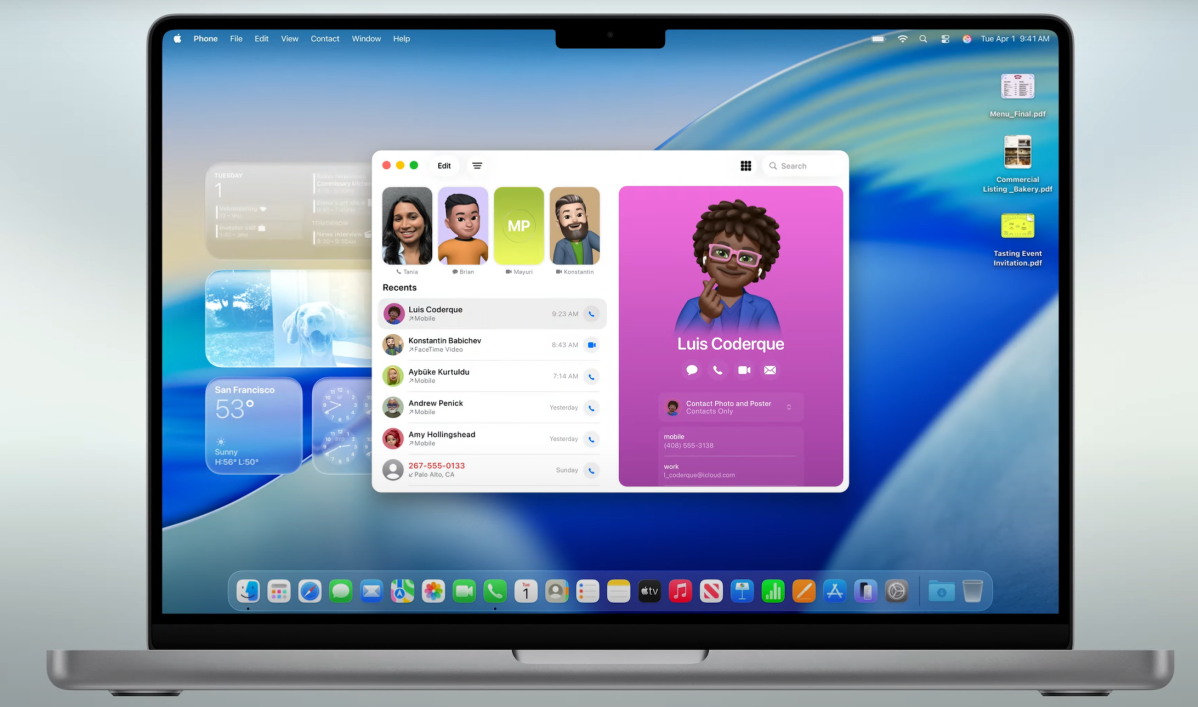
YouTube / Apple
Live Activities
Another feature that demonstrates the interoperability between the iPhone and Mac is Live Activities.
In iOS 18 you can see a live update on your Lock Screen relating to things like a takeaway order. Live Activities show the process of a food delivery driver, for example. Now, that functionality is coming to the Mac.
It will be powered by the iPhone Mirroring function, and will take the form of an iPhone-style widget that you will see on the screen of your Mac.
Games app
The Games app is another one that is available across all three main operating system updates: iOS, iPadOS and macOS. As with the iOS Games app the Games app on the Mac will bring together all the games you have on your Mac (bought from the App Store, Apple Arcade and elsewhere), as well as your friends list, achievements, and leaderboards. Tabs will make it easy to find the games you and your friends are playing.
A new Game Overlay will make it easy to adjust settings for a particular game. You’ll also be able to chat with friends and ask them to play.
There is also a new Low Power Mode coming which gamers will be able to turn on to maximise battery life when playing games.
And in related news Metal 4 is coming, which will enable next-gen features for Mac game developers, such as MetalFX Frame Interpolation and MetalFX De-noising.
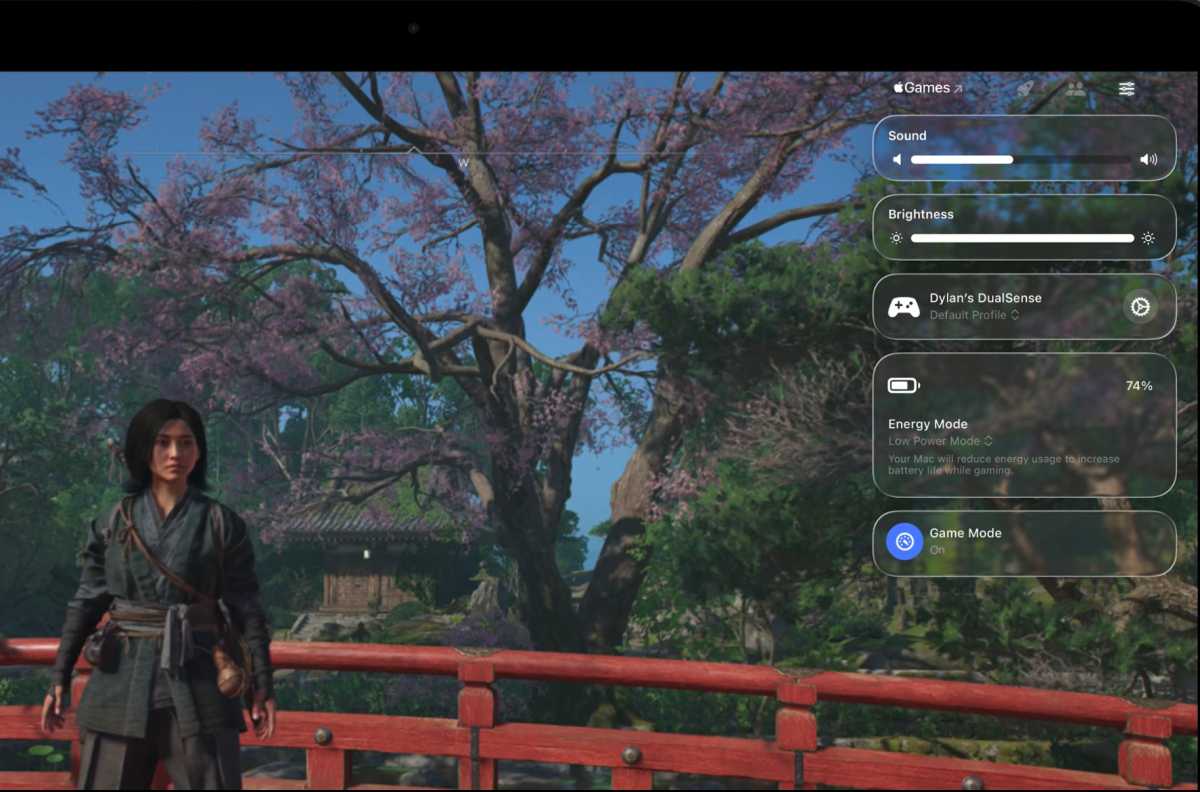
Apple
Shortcuts

Apple
The Shortcuts app is getting an overhaul in macOS Tahoe.
Shortcuts is a tool for automating tasks and repetitive actions. For those with more specific needs, there is also Automator on the Mac, but Shortcuts is simple to use and available on iPhone and iPad as well.
In Tahoe, Shortcuts will be able to run workflows based on factors like time of day, or in response an email from a specific person arriving. This functionality was previously limited to the iPhone and iPad versions.
There are new intelligent actions available that can be used to create Smart Shortcuts. Apple Intelligence and ChatGPT can be used to enhance these Shortcuts. Apple says that “Users will see dedicated actions for features like summarizing text with Writing Tools or creating images with Image Playground.”
Live Translation
One of the most useful new features announced at WWDC is Live Translation. With Live Translation you can text a friend who speaks a different language and have the translations appear in real time, or get instant translations during a phone call or FaceTime conference. Everyone gets their own translator.
You’ll be able to take advantage of Live Translation in the Phone app, Messages and FaceTime on your Mac.
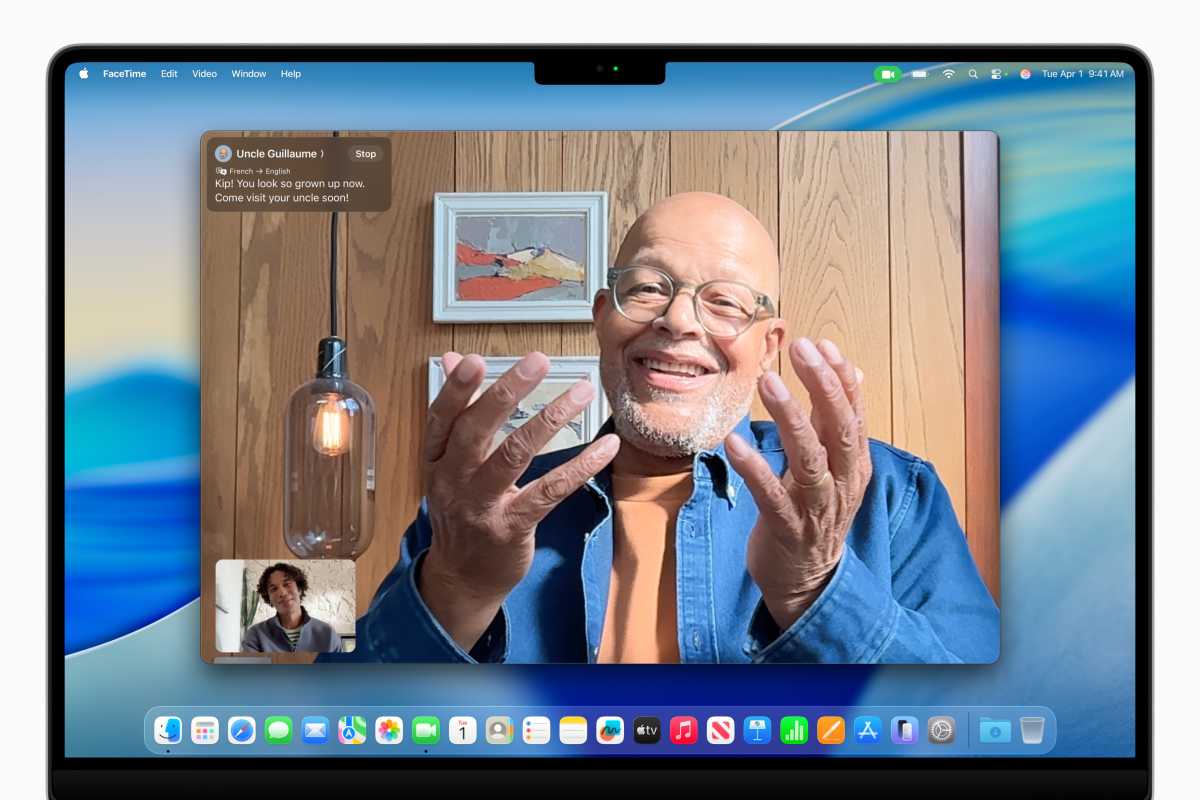
Apple
Journal
The Journal app, which arrived on iOS in 2023, is coming to the Mac (and iPad).
Terminal
Terminal is getting a colorful redesign and the Liquid Glass treatment, with support for 24-bit color and the ability to use Powerline fonts.
Reminders
Reminders is getting some help from Apple Intelligence. Reminders will scan a website, note, email or other content, then decide the most relevant action items for you based on its findings. You’ll be able to use Apple Intelligence to automatically categorize your reminders into sections, making them easier to find
There are also changes coming to Safari, Messages, Photos, FaceTime and Notes.
